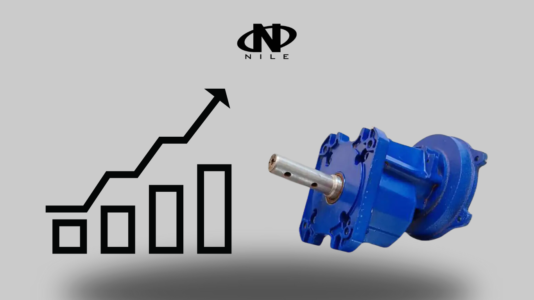Choosing an industrial gear motor and its calculations When choosing and buying a gear motor, we have to consider various factors. Factors such as conversion ratio, torque, input and output revolutions, etc. are only part of the important and necessary parameters when choosing an industrial motor gearbox. The high variety of industrial gearboxes, from helical and solar to its customized types, the type of work of each in different industries, connections and how to use them, all influence the choice of gearbox. Examining each of these technical information requires expertise and experience in this regard. However, we will describe each of these factors in a simple and precise way. Input speed, output speed and conversion ratio in industrial gearbox, the values of input speed and output speed in the gearbox are one of the most influential factors when buying an industrial gearbox.The input speed of the gearbox is received directly from its driver, for example, the electric motor. These values are usually equal to 3000, 1400, 900 and 750 revolutions (rpm). Usually, most gearboxes in various designs have the ability to accept different input rounds; But the important thing in this regard is the output distance we need. Suppose we need 100 output revolutions per minute, the main problem is to determine the correct value of input revolution. How to recognize the right entry round? In this section, another parameter called conversion ratio or reduction ratio should be checked. The conversion ratio determines the relationship between the input and output revolutions of the gearbox. The value of this parameter is determined based on the number of gears of the gearbox and is expressed as 1 to x.For example, a gearbox with an input speed of 1400 rpm, if its conversion ratio is 100, its output speed will be equal to 14 RPM. Now in the previous example where we wanted 100 rpm output, we could use a 3000 rpm engine and a 1 to 30 ratio gearbox, or a 1400 rpm engine with a 1 to 14 gearbox. Also 900 or 750 rpm. Therefore, what determines the output speed of the gearbox is its ability in the amount (ratio) of reduction. Another important point is that 3000 rpm engines put a lot of pressure on the gearbox and reduce its useful life. For this reason, they are not used, except in special cases. The input power of the gearbox (P) drives the gearbox of any type (electric motor, servo motor, hydromotor, etc.) has an output power.Accordingly, it is very important that the gearbox you are looking for has the ability to withstand this power. Industrial gearbox torque (T) Torque, the main reason for using gearboxes! The ability to increase torque in gearboxes is the most important reason for using this industrial equipment. However, the power of increasing the torque in all types of industrial gearboxes is not the same and depends on various factors. Considering and recognizing the correct value of this factor is very effective for choosing a gearbox and even an engine.Low to medium torques suitable for light to semi-heavy jobs can be provided through a variety of industrial helical gearboxes. But for torques like 200,000 Nm, it is necessary to use strong gearboxes such as solar or helical. Note, if the torque value is not selected according to the industry’s needs, it is very damaging and reduces the life of the gearbox. Now, the main challenge in this regard is how to choose the right torque for each gearbox and according to the needs of the industry. By using the following formula, we can easily obtain the torque required by our industry in accordance with other important factors such as power and output speed: Torque (Nm) = [power (Kw) ÷ output speed (rpm)] × 9550 service factor ( SF) service factor is directly related to the efficiency, longevity and operation of the gearbox. This item determines how far the gearbox can operate outside of the specified values for it. For example, service factor 1 means that it can only handle the power and torque listed on the gearbox, and more than that is not possible. Meanwhile, service factor 1.5 can tolerate up to half times more than usual.Usually, in order not to put too much pressure on the gearbox and actually increase the reliability factor, it is always better to choose a gearbox whose torque and bearing capacity are higher than the values we want. In this case, if a shock enters the gearbox or more torque is needed, it will not be a problem. Keep in mind that most of the things we have reviewed so far are usually listed on the motor-gearbox nameplate. And it is enough to choose our industrial equipment by knowing each one and knowing the needs of our industry. The installation and operation conditions of the gearbox in the type of operation of the gearbox; The amount of slack, how heavy the work is (depending on the amount of radial load applied to the gearbox) is important. For example, in a device like
Selection of industrial gearbox motor and its calculations

28
مرداد

